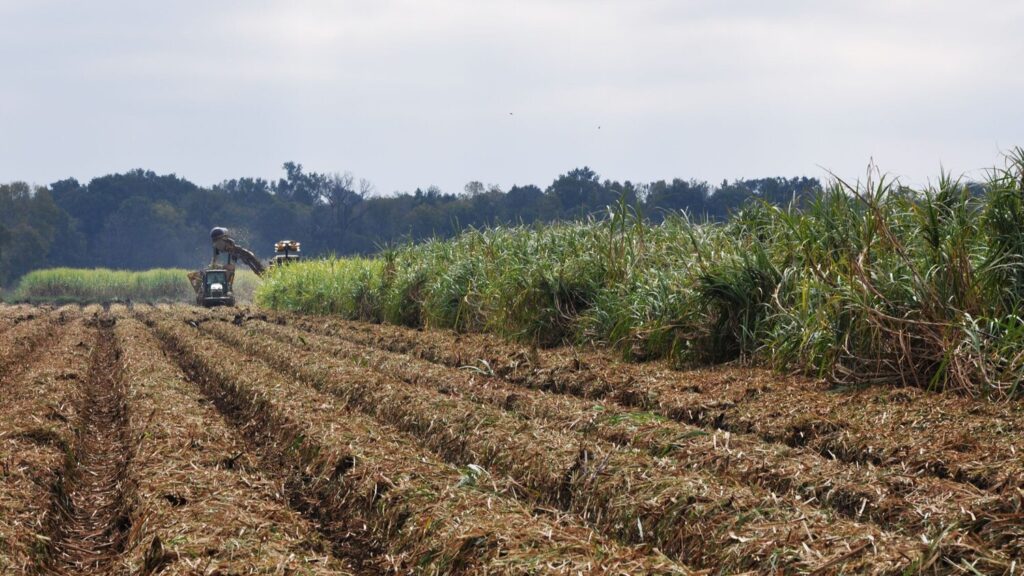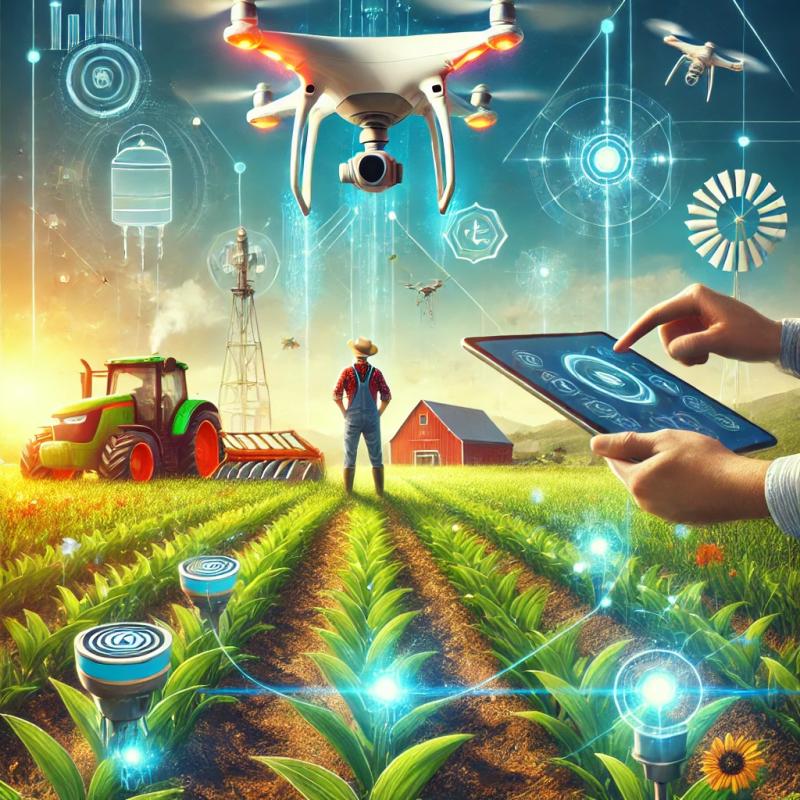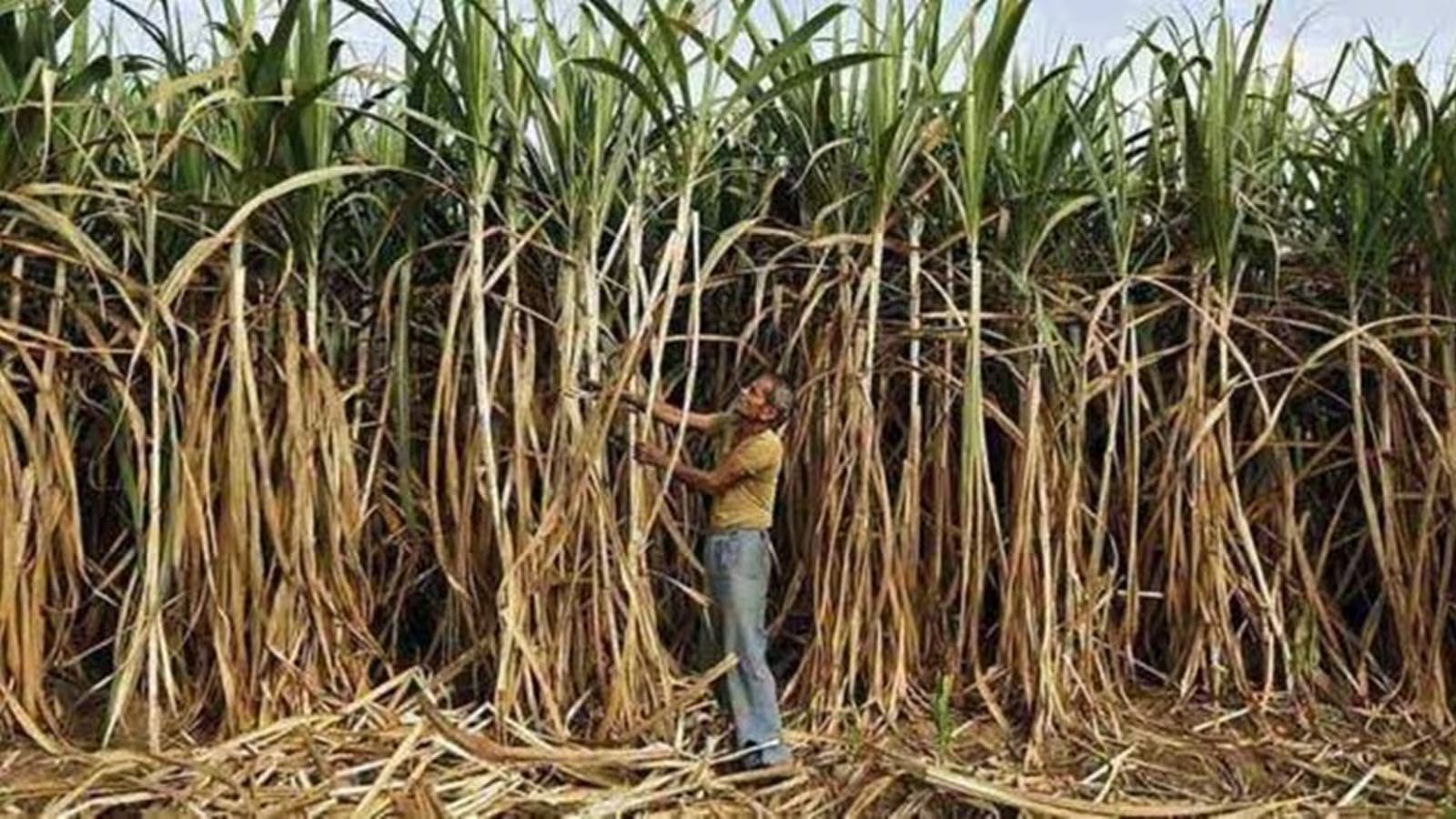Sugarcane cultivation is an important agricultural activity in Maharashtra, especially in western Maharashtra. Farmers cultivating sugarcane are better-off due to the profits being derived from the crop. The districts of Pune, Satara, Sangli, Solapur, and Kolhapur are famous sugarcane-growing districts, whereas Ahilyanagar, Chhatrapati Sambhajinagar, and Jalna are also major sugar cane-growing areas. Sugarcane is used mainly for the production of sugar, and the state has many co-operative sugar-mills that not only process this crop but also employ thousands of people in the rural areas.
As the first-of-its-kind trial in India, the Agricultural Development Trust of Baramati entered into an application of artificial intelligence for increased productivity in sugarcane farming. The sugarcane farming model was created through collaborative efforts by the Trust, Microsoft, and Oxford University, which achieved high yields at low costs. This experiment was then employed on the sugarcane fields of nearly 1,000 farmers. The production of sugarcane was increased 30-40% of sugarcane on an average.
Farmers will increase production by up to 40 percent
Production costs declined by 20 to 40 percent with water consumption dropping to the extent of 30 percent. Bhushan Gosavi observed that with the help of AI, sugarcane yield can surpass 160 tons in a single harvest. This, in turn, reiterates the effects AI can have on improving agricultural productivity and resource efficiency.

The Agricultural Development Trust in Baramati has been running an AI-based sugarcane farming trial for three years involving about 1,000 farmers. Because of its success, the Maharashtra government intends to extend this program in the first phase to reach 50,000 farmers with 100,000 acres of land. For implementation, the state in its budget for 2025-26 has allocated ₹500 crore over two years for AI integration in agriculture. The main purpose of AI integration is to provide farmers with crop planning advice based on AI, decrease production costs, increase productivity, and ensure sustainable market access for the produce.
“Our production is up by 40%,” said. Daund-based farmer Mahendra Thorat, who raises sugarcane and bananas on 21 acres, added: “From traditional farming, we have evolved. In July 2024, I applied AI techniques across our two acres.” Thorat saw substantial gains in productivity, water conservation, and pest control as a result of informing his agricultural practices with features from the data-driven recommendations of the AI system.
He elaborated, “Following the app directions, I have started to apply the same AI methods to all my other plots.” “From the two acres where I have put AI farming, I expect to harvest about 130 tons of sugarcane from about 30 percent profit.”
“We had to irrigate the fields for four hours at least and manually check each sugarcane plant for disease. This method was very water-consuming. But now, thanks to AI technologies, I can get real-time updates on my phone, which help in better management of the entire process,” added Thorat.
Balasaheb Dorge, an aged farmer with twenty years of traditional farming experience, said, “I have been practicing conventional methods for 20 years, including scheduled irrigation for sugarcane. But Mahendra Thorat now follows AI methodology, and the information he is obtaining with respect to his crops is also useful for us. We are learning from his experiences and gaining valuable insight into sugarcane cultivation. It is evident that AI farming techniques are proving to be beneficial, and everyone should embrace it. I, too, would be switching to AI-based sugarcane farming in the near future.”
This is how it began
The project has the name ,’Centre for Excellence Farm Vibes’ and is led by Prataprao Pawar, trustee of the Agricultural Development Trust. It was set up at Krishi Vigyan Kendra in Baramati and developed with the Oxford University and Executive Director at Microsoft. The project, which has been a topic of interest for many- including a mention from Microsoft CEO Satya Nadella in his appreciation of its innovative attempt at transforming agriculture and what it means to farmers through AI- is now off the ground.
Maharashtra’s sugarcane productivity
Despite being the largest international space in sugarcane cultivation, India still does not comply compared to Brazil and Chile in terms of sugarcane yields per hectare. Within India, Maharashtra trails in sugarcane yield) in turn compared to Tamil Nadu. As per the survey conducted for the year 2024-25, about 14.20 lakh hectares in Maharashtra will have sugarcane. The expected yield from this area is about 1,100 lakh metric tons, producing possible revenues between ₹30,000 and ₹35,000 crore for the state.
Why sugarcane production has declined?
Though traditional farming methods are mainly employed, sugarcane is widely cultivated in Maharashtra. The factors that contribute to declining production include poor soil conditions, high salinity, and imbalances in organic carbon and major nutrients. Notably, soil-specific drip irrigation practices and modern spraying technologies are rarely adopted by farmers. Pesticides, fertilizers, and watering have all been rather overused, and they are proving to be counterproductive to high sugarcane yields. Even with an application of such extensive inputs, the desired effects on yield are not often realized, thereby throwing light on the necessity for more efficient and sustainable processes of cultivation.
How will AI help sugarcane growers?
Farmers can save a lot of time and understand the nature of fertility by carrying out immediate and thorough soil testing that is intended for sugarcane cultivation. This soil testing helps in assessing organic carbon, nitrogen, phosphorus, potassium, and soil density values. With the help of satellite data, farmers will be able to locate the spot inside the field to collect soil samples. Combining the findings using both the satellite-based assessment and lab reports, farmers can then apply the suitable basal dose of nutrients allowing the soil to meet the specific fertility profile for more efficient production and management of the crop.
Using controlled and specific ways of raising seeds through AI technologies will produce stronger and healthier seedlings. These enhanced methods can also generate ready sugarcane seedlings for planting after 21 days of development. In addition, using 40 large cup-sized cavities gives an additional advantage by encouraging root development, which results in stronger crops with better performance.

Artificial intelligence enables farmers to receive daily VPD (Vapour Pressure Deficit) updates to optimize nutrition application—from fertilizers to organic inputs and bio-chemicals—right from pre-planting to harvest. This facilitates the absorption of nutrients by the crop while minimizing water usage and preventing nutrient loss via leaching or evaporation. These lead to remarkable development on various crop parameters-the number of shoots, cane length, stalk count, thickness, height, average weight, and cane brix kind and concentration. Hence, on account of this precision, the overall sugarcane production can be doubled, increasing the effectiveness and profitability of the growing exercise.
Modern technologies enable farmers to mitigate challenges that come with sugarcane farming. Nowadays, innovations such as satellite imagery, computer vision, artificial intelligence (AI), remote sensing, and ground-based imaging are being used to assess production levels and sugar yield. To enhance productivity, hyperspectral imaging is supplemented with AI-based weather and rainfall analysis permitting accurate forecasting. The application of causal machine learning in sugarcane farming is arguably the first in the world, with a potential yield hike of up to 30%. Targeting progressive farmers, this initiative is planned to be rolled out under the name of “Farm of the Future” across 25 districts in Maharashtra.
The selected beneficiary farmers will be trained in applicable advanced technologies through a structured process planned for implementing the project. Graphics presented on user-friendly interactive dashboards display heat maps, satellite imagery, crop-pattern suggestions, irrigation management tools, and pest and disease monitoring systems to help these farmers in making informed and efficient decisions with regard to farming.
Now farmers will directly access detailed information on their crops directly to their mobile phones. In addition, advanced novel technologies will be developed to forecast future agricultural yields with respect to different natural data inputs. The Centre of Excellence is undertaking pioneering work towards several innovative algorithms in this endeavour.
One such technology is Async Fusion, the blending of satellite and drone imagery with ground sensors for deep insights into crop and soil health. Another is Space Eye, which utilizes AI to enhance satellite images for clearer and more accurate agricultural visuals. Meanwhile, Deep MC- the powerful predictive tool capable of accurately forecasting temperature and rain by heavy use of sensor data and weather station inputs- helps in revolutionizing the way farmers monitor and manage their fields.
Benefits for farmers
To get the soil nutrient deficiencies for sugarcane crops easily, satellite mapping would be invaluable. Advanced sensor systems of monitoring soil moisture, salinity, and required nutrients like nitrogen, phosphorus, and potassium, along with real-time weather updates, will ensure efficient planning for irrigation, fertilization, and pest and disease management.
While also using hyperspectral cameras for precise monitoring of crops, it also allows ample opportunity for placing fertilizer and pesticides only in areas where it is required. Such precision reduces runoff of nutrients, thus taking care of soil health over a period, and decreases input costs. This technology will ensure scientific methods of sugarcane farming, which will enhance crop production but will ultimately be economical. These technologies will help the farmer to predict the sugar yield accurately, monitor crop growth, and decide on the best harvesting time.
Causal machine learning will eventually find its way into sugarcane farming. It should offer a better understanding of how key factors such as irrigation schedules, fertigation alerts, and soil health affect crop performance. It should also improve productivity. Techniques As part of its rigorous and intelligent high technology, very high-resolution hyperspectral and multispectral digital upward-looking cameras will be utilized through drones to gather precise data on crop health, pest and disease detection and severity, nutrient level, water stress, crop classification, and harvest planning. Implementing AI with drone technology will make it smart farming, more efficient farming, and help improve yields and resource utilization.







